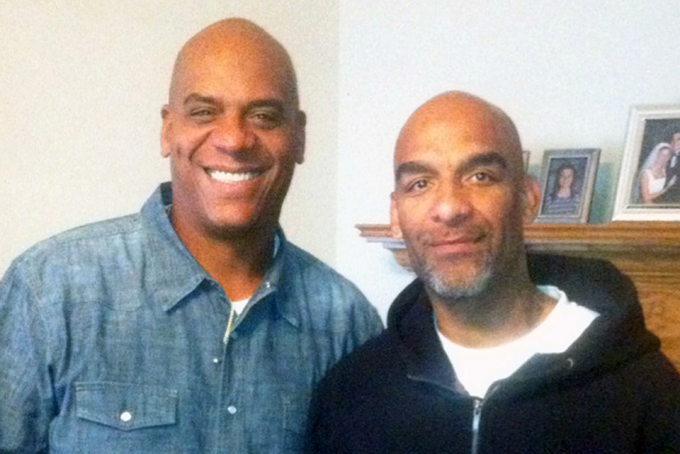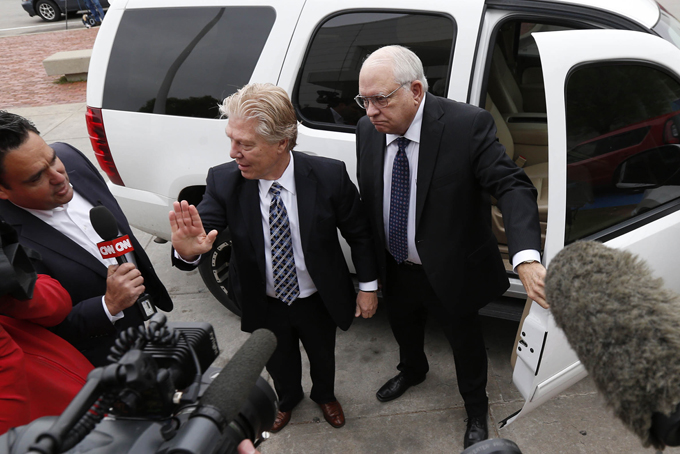
By the thousands, volunteers across the United States sign up to assist their local law enforcement agencies as reserve police officers and sheriff’s deputies. Most perform routine duties in unpaid anonymity. A few become known as heroes or rogues.
Among that vast contingent of reservists was Robert Bates, a 73-year-old insurance executive, who was charged Monday with manslaughter in the death of a man shot as he lay on the ground in Tulsa, Oklahoma. A police investigator said Bates, who is white, thought he drew a stun gun, not his handgun, when he fired at Eric Harris, who was black, in the April 2 incident.
A video shot by deputies and released Friday at the request of the victim’s family shows a deputy chase and tackle Harris, whom they said tried to sell an illegal gun to an undercover officer.
The incident rekindled discussion about the widespread use of reserve officers, including many authorized to carry firearms even though they generally undergo far less training than regular officers. While there’s no current official tally, an article in the FBI Law Enforcement Bulletin in 2006 estimated the national total of reserve officers at 400,000.

In Oklahoma, every reserve deputy is required to complete a minimum of 240 hours of training on legal basics, investigative procedures and use of firearms. Reserve deputies in Tulsa County get even more training — 320 hours — but that is still only half the requirement for a regular full-time officer.
There is no age limit in Oklahoma, but all reserve officers must annually recertify with a minimum score on a firearms-training course. Bates, who was briefly a full-time officer with the Tulsa Police Department from 1964 to 1965, updates his certification every year and has completed more than the state-required hours, said Tulsa County sheriff’s spokesman Shannon Clark.
Tulsa County’s acceptance of older reservists is not unusual. In Washington D.C., for example, a breakdown provided in 2011 showed that 42 percent of the city’s police reserve officers were 50 or older.
Nationally, a major rationale for the reserve programs is to provide extra manpower for budget-strapped departments, so that regular officers — sometimes in short supply — are freed up to concentrate on high-priority duties. While some reserve officers receive modest compensation, most work without pay, and many are expected to provide their own uniforms and equipment.
In Michigan’s Wayne County, for example, applicants seeking to become a reserve sheriff’s deputy are required to bring their own department-approved handgun to the training program and are cautioned that the total cost of equipment and uniforms will likely total between $800 and $1,500.
Even within a single department, training requirements can vary widely.
The Los Angeles Police Department, which has more than 400 active reserve officers, requires about 170 hours of classroom and self-defense training for its lowest-level reservists, who perform such functions as front-desk duty and community relations. Its top-level reservists, who carry weapons and perform the same tasks as full-time officers, undergo close to 400 hours of instruction.
New York City has a large auxiliary police contingent — volunteers who are not armed and are assigned to what the police department describes as “non-enforcement and non-hazardous duties” such as crowd control at parades and festivals.
In some circles, the role of reservist has a certain cachet. Former NBA star Shaquille O’Neal has served as a reserve police officer in several cities. Movie actor Steven Seagal has been a reserve deputy sheriff in New Mexico and Arizona.
But the role can be perilous. In November 2013, Robert Libke, a reserve police officer in Oregon City, Oregon, was fatally shot while responding to a house fire started by an 88-year-old man.
Last September, Mark Vaughan, a reserve sheriff’s deputy working as chief operating officer of an Oklahoma food processing plant, shot and wounded a former employee who had beheaded one woman with a knife and was attacking another worker.
On the other end of the scale, some reserve officers engage in serious criminal activity.
In 2012, a former Clarkston, Georgia, reserve policeman pleaded guilty to warning suspected drug dealers about an impending search of their apartment by federal agents. In 2009, a former Velda City, Missouri, reserve police officer was sentenced to more than 19 years in prison for violating the federal civil rights of a woman he sexually assaulted during a traffic stop.
Regular police officers have mixed views on the value of reservists, according to a 2011 article in PoliceOne, an online magazine serving the police community. Some officers praised the contributions of reservist volunteers, while others were derisive, suggesting some reservists simply wanted to “play” at being police officers.
The head of the Oklahoma chapter of the American Civil Liberties Union echoed some of that criticism on Monday, calling for for an end to the use of reserve deputies for significant police work.
“If somebody wants to volunteer with a police department and help hold someone’s hand to cross the street at (an Oklahoma City) Thunder game or a special event, that’s fine,” said Ryan Kiesel. “But to allow someone to play police officer with real bullets and a gun is reckless. That should never happen.”
Doug Wyllie, the PoliceOne editor who wrote the article, said most reservists fulfill their missions well, while a few get into confrontations for which they are ill-prepared.
“They may not have the mindset or skills to deal with it,” he said. “That’s an unfortunate consequence of the police department budget being slashed.”
The budget savings can be sizeable. The Harris County Sheriff’s Office, based in Houston, has about 200 reserve deputies and said the work they do saves the county millions of dollars each year.
___
Associated Press writer Sean Murphy in Oklahoma City contributed to this report.
